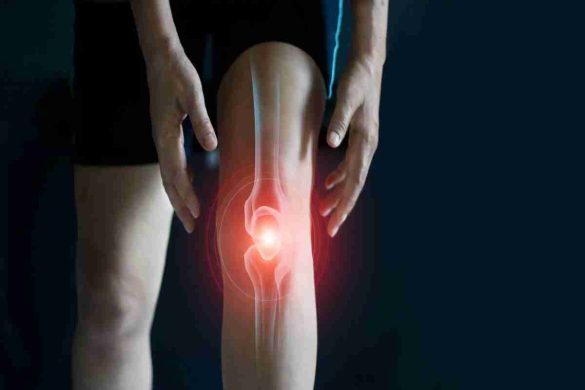Revolutionizing Knee Pain Rehab
Knee pain is a common complaint among adults, affecting up to 25% of the US population. Conventional knee pain treatment focuses on pain management, with the use of NSAIDs like ibuprofen and naproxen, and corticosteroid injections to reduce pain and inflammation. But pain management alone does not eliminate the underlying causes of knee pain – it merely kicks the can down the road until surgery becomes the final option.
Enter regenerative medicine, a new approach to treating knee pain that bolsters the body’s own reparative mechanisms, stimulating the growth of new tissue cells and repairing eroded cartilage. When used in conjunction with personalized physical therapy, regenerative procedures are helping thousands to reverse and eliminate their knee pain, and restore pain-free functional mobility.
What is Causing Our Knee Pain Epidemic?
Alarming research shows that the incidence of knee pain is on the rise, with cases more than doubling since the mid-20th Century. According to the Knee Pain Centers of America, knee osteoarthritis (KOA) is a major contributor to knee pain, affecting both men and women across all demographics.
Knee OA is characterized by:
- Knee pain during walking, standing, and climbing stairs
- Knee stiffness and reduced range of motion
- Swelling and inflammation, especially after physical activity
- Knee instability – sensations of the knee giving way during walking or weight-bearing
- Crackling or grinding sensations or sounds when moving the knee
Other causes of knee pain include acute traumatic knee injuries, especially among younger populations who engage in sports and exercise. Injuries like meniscus tears, ligament ruptures, tendinopathies, and repetitive overuse injuries are common. Knee injuries acquired early in life can have life-long consequences, especially if they were never properly rehabilitated, predisposing patients to knee OA later in life. But today’s epidemic of chronic knee pain can be largely attributed to lifestyle.
Multiple lifestyle factors can contribute to chronic knee pain:
- Sedentary lifestyle during developmental years. It’s no secret that today’s youth are more sedentary than previous generations, thanks to technology and cultural trends that steer them away from the risks of physical activity. According to the American Academy of Orthopedic Surgery (AAOS), children build bone mass during peak growth periods, especially between ages 10-20, and bone density increases in response to weight-bearing exercise.
- Excessive sitting and not enough walking. The human body is uniquely designed to walk and carry loads, but technology has made it possible to earn a living without ever leaving the comforts of home. Sitting for long hours with knees and hips bent at 90 degrees causes muscle imbalances and weakness that affect knee alignment and stability.
- Carrying extra body weight. Extra weight causes the structures that stabilize and support the knees to work overtime, contributing to wear and tear, and increasing your risk of injury and osteoarthritis.
- Lack of exercise and poor diet that lead to metabolic disorders. Physical inactivity combined with a high-sugar diet of processed foods are the key causes of metabolic disease, marked by chronic systemic inflammation, hypertension, insulin resistance, and type 2 diabetes. Metabolic disease is strongly correlated with knee osteoarthritis.
It is never too late to make conscious lifestyle choices that improve your overall health and reduce the load on your knees. Walking or exercising with knee pain may seem counterintuitive, but research shows that exercise training has a therapeutic effect on knee OA by increasing muscle strength and density, altering tendon structure, enhancing load-bearing capacity, reducing inflammation, and preventing cartilage degeneration.
Regenerative Therapies for Knee Pain
It has long been believed that knee OA is a degenerative condition that is destined to get worse over time. But a growing shift toward integrative medicine is changing the way knee pain is perceived and treated. Rather than focusing on pain management, alternative therapies seek to identify the underlying causes of knee pain and correct them. This entails a multimodal approach geared to improving knee biomechanics while stimulating growth factors that drive tissue neogenesis.
Regenerative therapies for knee pain include:
- Shockwave therapy, to dull pain, decrease inflammation, and attract regenerative stem cells to the treatment site.
- Prolotherapy, a regenerative needling procedure that uses a neutral solution to irritate damaged tissues, causing an immune response that increases the presence of growth factors that stimulate tissue healing.
- Platelet-rich plasma (PRP), an orthobiologic procedure where a high concentration of platelets extracted from the patient’s own blood are injected into the treatment site, triggering a regenerative response.
- Alpha 2 macroglobulin (A2M), a naturally occurring blood plasma protein that reduces inflammation in arthritic joints and deactivates a variety of proteinases that cause the degradation of joint cartilage.
When combined with personalized physical therapy designed to strengthen the knee’s structures, enhance stability, and promote mobility, regenerative therapies can help to reverse tissue degeneration and eliminate knee pain without drugs or surgery.
Where to Find a Regenerative Knee Pain Specialist in NYC
Scientists are constantly finding new solutions with transformative potential, but conventional health care is slow to adapt. Regenerative medicine is upsetting the apple cart by reversing chronic knee conditions and restoring pain-free mobility. But finding a regenerative knee pain specialist in NYC can be a challenge.
NYDNRehab is one of the few private clinics in the United States to feature a broad range of advanced technologies and regenerative therapies. Their integrative and holistic approach to knee rehabilitation has saved dozens of patients from knee surgery, and helped them to regain pain-free functional mobility, and a better quality of life.
Resources
Nguyen, Uyen-Sa DT, et al. “Increasing prevalence of knee pain and symptomatic knee osteoarthritis: survey and cohort data.” Annals of internal medicine 155.11 (2011): 725-732.
Increasing prevalence of knee pain and symptomatic knee osteoarthritis: survey and cohort data
Zeng, Chu-Yang, et al. “Benefits and mechanisms of exercise training for knee osteoarthritis.” Frontiers in physiology 12 (2021): 794062.
Benefits and mechanisms of exercise training for knee osteoarthritis


